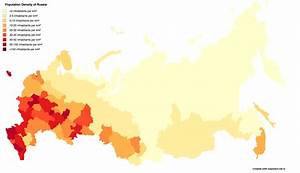All of us who have made our living in the field of migration, whether it be international or national, know what a highly influential factor the rate of population growth is in any country. Population growth of any nation determines what goods and services are available for consumption.

Russia can be divided into four different regions namely North, South, Central and East. With a proper perspective on the pattern of population growth in each region, we can answer the question, “How many Russians are there in Russia?” and also how big Russia’s population is in each region?
First of all, we should be aware that Russia has a very large territory to cover. It has territories in the Pacific Ocean, the Arctic Ocean, parts of Siberia, Kaliningrad Oblast, Rostov Oblast, Southern Osetra Oblast, Far East, Kamchatka and Bering Sea, the Volga River delta, Kamchatka Peninsula, Komi Republic, Far East Shelf, and Northern Caucasus. All these territories make up about two-thirds of the total area of Russia.
We must understand that the overall number of inhabitants of Russia is not the same across all these territories. As each territory is located at a particular time, the population growth of that area is distinct from that of the other territories.
The population of Russia in Russia is rapidly growing due to the growing rate of population growth in each region. Because of these regions’ demographic development, Russia’s total population in each area is continuing to grow.
The population of Russia is increasing due to increased birth rates. So the total population in Russia is increasing with each passing year. Population growth is considered to be a well-established phenomenon in the Russian Federation.
We should also note that asper United Nations estimates, Russia’s total population was 1.244 billion in 2020. The number of inhabitants of Russia is considerably higher as per the figures which are published by the United Nations. There are eleven regions in Russia, which contain a total population of almost three hundred million inhabitants.
Population statistics are not calculated in Russia at present. Population development in each region is being observed through the self-reporting of the population in each region. In this case, one cannot speak of official statistics as of yet.
As per the calculations, the population of Russia is increasing with each passing year. In the future, population statistics will be taken as seriously as the national statistics.
Population of Russia is also believed to be increasing due to increased life expectancy. The children of today have the opportunity to grow old and retire to the West. Thus, the age structure of the population of Russia is constantly changing.
What we can say is that while the population of Russia is growing, the population of Russia is also aging. This is another indication of the fact that the growing birth rate in Russia is really significant. Russia population by age is based on self-reporting.
Russia is undoubtedly continuing to grow and will continue to grow. This is a fact which is visible from the facts that in 2020, the total population of Russia was estimated to be around thirty-six and half million.





